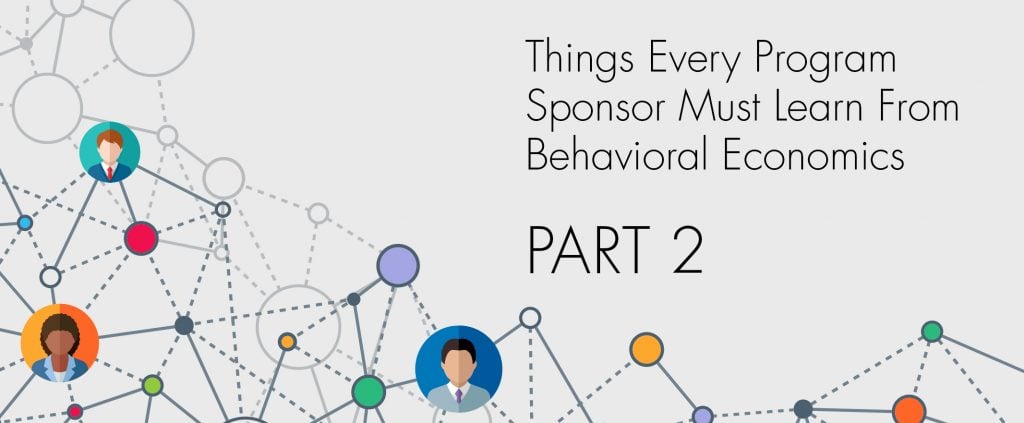In my last post, I talked about the power behavioral economics can bring to any rewards program. I stressed that those who knew the science and understood how it impacted human behavior could capture real advantages. In part one, I outlined the appeal and motivational pull that non-cash currencies have over money. In this edition, I’ll talk about what behavioral economics teaches us about communications planning and how we can put that information to good use.
Program communications can be the forgotten stepchild of reward initiatives. Eleven percent of all recognition programs don’t even have a communications plan designed to promote or reinforce it on any level. That’s a major mistake. Secret programs don’t work. The ones missing regular communication elements underperform at alarming levels.
The formula for effective communication is simple. First gain your audiences’ attention and then keep it. Along those lines, behavioral economics teaches us that people pay attention to (and then respond to) information that’s about them. Stated more succinctly, context is king and it should be the driving force behind how you “frame” messages.
The value of framing messages
Some behavioral experts call the process of aligning messages around an individual’s circumstance or situation “framing.” By paying special attention to what behavioral economics has to say here, you can build your ongoing messaging strategy with confidence that what you have to say gets absorbed, understood and acted upon by the audiences who receive them.
That’s key because the importance of “message listenability“ should never be underestimated. Program sponsors are constantly battling for the employees’ ears. Selective auditory attention tells us that people tune into information that interests them. By framing your program’s content around user interests, you too will reach and influence more individuals, and you will do so in the most efficient way possible.
The power of segmentation
People respond to information that’s about them. When constructing your communications strategy you should do so across different employee segments. Be as specifics as possible. Design your content so it speaks directly to each relevant subset of your workforce.
Why is that important? Behavioral economics has proven that our willingness to pursue any opportunity is influenced by the way in which it is framed and the strength of “framing” is “context-dependent.” In other words, if people see their own set of circumstances within the offer (i.e. they understand what you’re talking about, they believe they can do what you’re asking them to do, and they want what you’re offering) they are much more likely to be motivated by it.
Segmentation fine tunes context and context sets the stage for buy-in. Employees and salespeople need to know what’s expected of them and what’s in it for them when they exceed those expectations. Every message should establish what you want a particular sets of employees to do and it should do so around the language and measures that are meaningful to their jobs.
To gain and keep the attention of all of your employees you should use tailored messages to strengthen their understating of what you are asking them to do along with what’s at stake if/when they do it. In fact, behavioral economics tells us that the more meaningful the messages are the more likely audiences are to hear and act upon those messages. Smart companies know this. Advertising agencies, health care companies, financial institutions, even governmental agencies have all turned to behavioral economics and are putting these theories to work every day.
Isn’t it time for planners of recognition and incentives programs to operate with the same insight?



